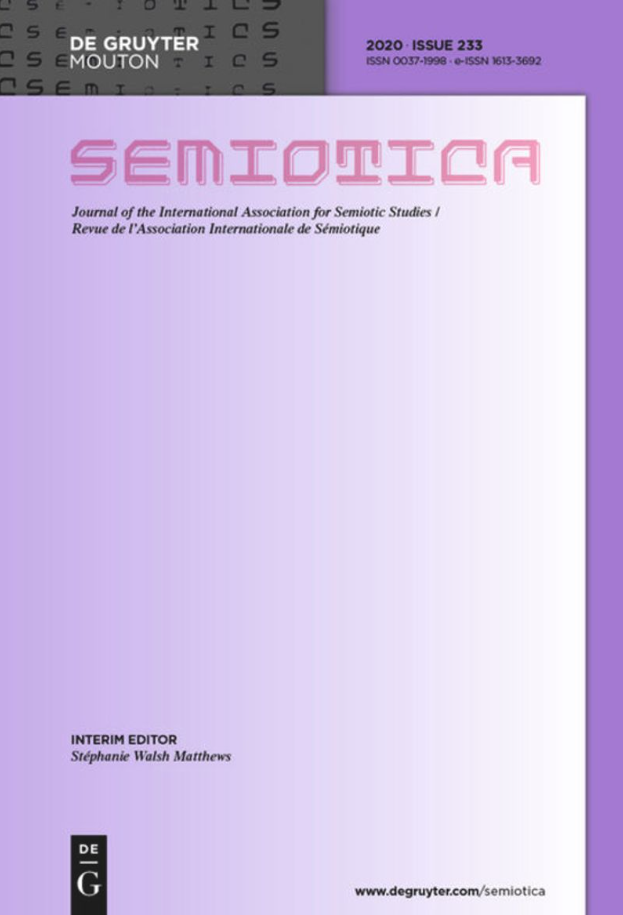Subscribe to Open: An Interview With Semiotica
Our featured journal for Open Access Week 2024, Semiotica has been published by De Gruyter Mouton since 1969. Recently, the journal stepped into a new era of open access with the Subscribe to Open model. In this interview, the editorial team explain how the transition is making research more accessible and bolstering the journal's global impact.
Billy Sawyers: Semiotica has a rich history as a journal in the field of semiotics. Can you tell us more about its origins and significance?
Gabriele Marino: Semiotica is a historic journal for semiotics, a discipline established in the 1960s for the study of signs, texts, and discourses, both within and outside the realm of natural verbal language. This field emerged from the pioneering thoughts of two seminal figures in contemporary social sciences and philosophy: Ferdinand de Saussure and Charles Sanders Peirce. The journal was launched in January 1969 as the official scientific publication of the newly founded International Association for Semiotic Studies (IASS), with Thomas Albert Sebeok, a polymath, as the Editor-in-Chief. The editorial board included notable names like Julia Kristeva, Roland Barthes, and Umberto Eco. Today, Semiotica continues its legacy with De Gruyter Brill.
BS: How has the journal evolved in recent years under its current leadership?
You can find Semiotica on Facebook, Instagram, LinkedIn, X, YouTube and TikTok.
GM: Since December 2020, Semiotica has been led by a trio of Editors-in-Chief: Massimo Leone (University of Turin and University of Shanghai), Stephanie Walsh Matthews and Jamin Pelkey (both from Toronto Metropolitan University). In October 2023, we officially launched a social media presence. I manage our accounts on six channels, having previously launched and run social media accounts for the semiotics journal Lexia. The goal of this initiative is to promote semiotics on social media, not only as a specialized research field but also through contemporary online popular science communication tools. Our presence on platforms like Facebook, Instagram, Twitter/X, and others helps us reach a broader audience.

BS: The journal has recently transitioned to the Subscribe to Open model under DG2O. What does this mean for SEMIOTICA and its community?
GM: There are clear benefits for authors, professionals, and occasional readers: authors will see their papers – including the highly specialized ones – accessible for free, thereby increasing readership, citations, and bibliographic inclusion; readers will find cutting-edge research readily available, reducing costs and enhancing their own reading habits and research (academic publishing is a B2B market of prosumers; i.e. readers are more than often researchers themselves).
Today’s scholarly research and academic publications are increasingly competitive and require optimal positioning in the international context. In this regard, the transition in September 2023 to the S2O model represents a significant asset for Semiotica. Not all specialized journals in the fields of semiotics, linguistics, semiotic anthropology and semiotic philosophy offer free open access options, which are widely regarded by practitioners as the future of academic publishing. This aspect has further boosted the visibility and impact of the journal.
You are currently viewing a placeholder content from YouTube. To access the actual content, click the button below. Please note that doing so will share data with third-party providers.
BS: Massimo, as one of the co-Editors-in-Chief, what are your thoughts on the impact of the S2O model?
Massimo Leone: Publishing in open access through the S2O model has been a game-changer for our journal. The transition has expanded our readership and improved the quality of submissions. Authors are more motivated to submit high-quality work, knowing it will reach a broader audience without access barriers. Furthermore, making publicly funded research openly accessible aligns with the ethical imperative to share knowledge funded by public resources, enhancing the societal impact of our work and contributing to the advancement of science and knowledge.
Open Access Week 2024: We hear from librarians around the world about the past, present and future of OA. Learn more.
BS: What are the long-term implications of adopting the S2O model for the journal?
GM: The S2O model not only strengthens both authorship and readership but also ensures quantitative and qualitative growth for Semiotica. It embodies a contemporary approach to research ethics, particularly as research in the humanities and social sciences is increasingly funded by transnational public institutions like the European Research Council (ERC). This model helps us contribute more effectively to the dissemination of high-quality research.
With the S2O model and our growing online presence, Semiotica is well-positioned to continue its leadership in the field of semiotics. We’re excited about the opportunities ahead and look forward to further expanding our community of readers and contributors.
